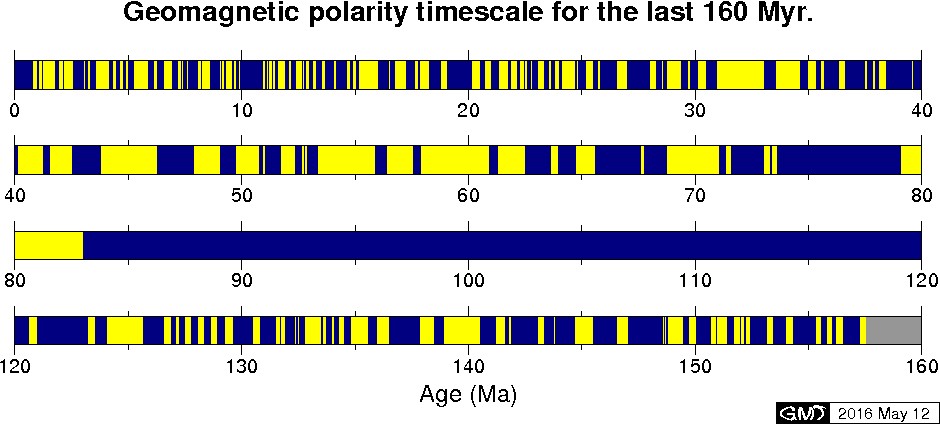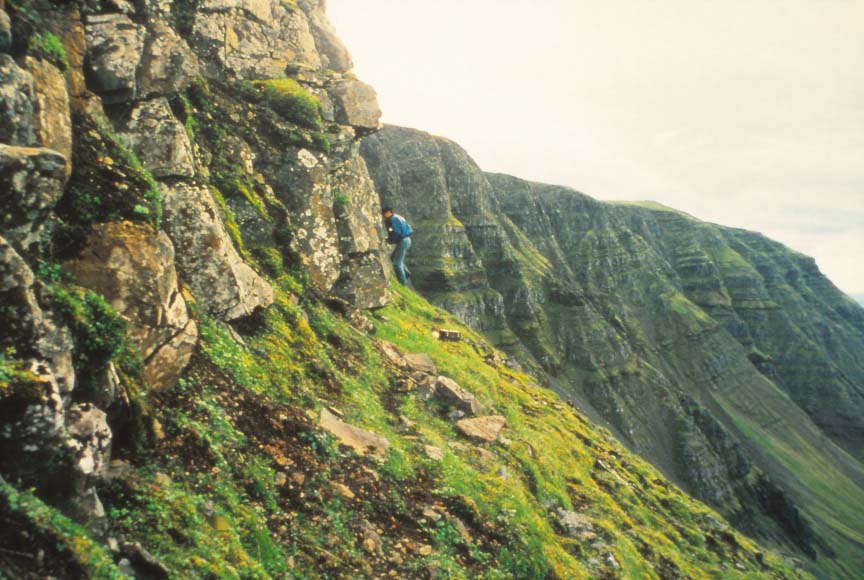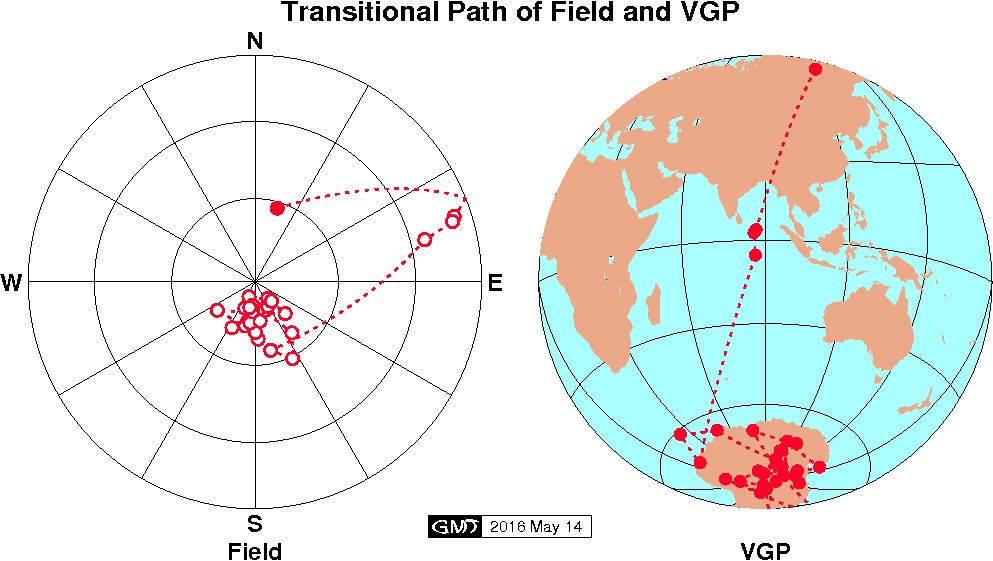Past Geomagnetic Field
Observation of the geomagnetic field is available only for the last 400 years which is too short to see the whole picture of the time variation of the earth's magnetic field. Paleomagnetism is the only way which enabled us to find the fact that the geomagnetic field reversed its direction many times in the past. Since the emerge of paleomagnetism in 1950's, many reversals were identified as world-wide phenomena. Nowadays with the results from marine magnetic anomalies, a detailed geomagnetic polarity time scale (GPTS) is established for the last 160 million years, although it will be constantly updated in the future whenever new reversals are discovered or the ages are revised.

Here is an example of a geomagnetic transition obtained from Icelandic lavas.
Paleomagnetic Sampling at Lava Successions

The geomagnetic transition 2.5 million years ago was found at the lowest part of 29 lava successions. As shown in the figure of paleodirections and poles, the lowest lava showed a normal direction while the next three lavas showed very shallow eastward directions. Then, all the rest of the lavas recorded reversed directions. Figure of virtual geomagnetic pole (VGP) shows that the VGP jumped from the northern high latitude through near India and to the southern polar region. But this is just the way of showing the paleomagnetic directions, the actual transition is probably not a simple flipping of the dipole moment because the intensity of the geomagnetic field during transition is usually very small (about 1/10 of the ordinary value).
